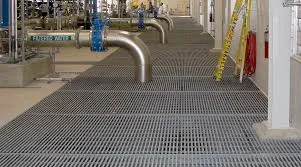
-
 Afrikaans
Afrikaans -
 Albanian
Albanian -
 Amharic
Amharic -
 Arabic
Arabic -
 Armenian
Armenian -
 Azerbaijani
Azerbaijani -
 Basque
Basque -
 Belarusian
Belarusian -
 Bengali
Bengali -
 Bosnian
Bosnian -
 Bulgarian
Bulgarian -
 Catalan
Catalan -
 Cebuano
Cebuano -
 China
China -
 China (Taiwan)
China (Taiwan) -
 Corsican
Corsican -
 Croatian
Croatian -
 Czech
Czech -
 Danish
Danish -
 Dutch
Dutch -
 English
English -
 Esperanto
Esperanto -
 Estonian
Estonian -
 Finnish
Finnish -
 French
French -
 Frisian
Frisian -
 Galician
Galician -
 Georgian
Georgian -
 German
German -
 Greek
Greek -
 Gujarati
Gujarati -
 Haitian Creole
Haitian Creole -
 hausa
hausa -
 hawaiian
hawaiian -
 Hebrew
Hebrew -
 Hindi
Hindi -
 Miao
Miao -
 Hungarian
Hungarian -
 Icelandic
Icelandic -
 igbo
igbo -
 Indonesian
Indonesian -
 irish
irish -
 Italian
Italian -
 Japanese
Japanese -
 Javanese
Javanese -
 Kannada
Kannada -
 kazakh
kazakh -
 Khmer
Khmer -
 Rwandese
Rwandese -
 Korean
Korean -
 Kurdish
Kurdish -
 Kyrgyz
Kyrgyz -
 Lao
Lao -
 Latin
Latin -
 Latvian
Latvian -
 Lithuanian
Lithuanian -
 Luxembourgish
Luxembourgish -
 Macedonian
Macedonian -
 Malgashi
Malgashi -
 Malay
Malay -
 Malayalam
Malayalam -
 Maltese
Maltese -
 Maori
Maori -
 Marathi
Marathi -
 Mongolian
Mongolian -
 Myanmar
Myanmar -
 Nepali
Nepali -
 Norwegian
Norwegian -
 Norwegian
Norwegian -
 Occitan
Occitan -
 Pashto
Pashto -
 Persian
Persian -
 Polish
Polish -
 Portuguese
Portuguese -
 Punjabi
Punjabi -
 Romanian
Romanian -
 Russian
Russian -
 Samoan
Samoan -
 Scottish Gaelic
Scottish Gaelic -
 Serbian
Serbian -
 Sesotho
Sesotho -
 Shona
Shona -
 Sindhi
Sindhi -
 Sinhala
Sinhala -
 Slovak
Slovak -
 Slovenian
Slovenian -
 Somali
Somali -
 Spanish
Spanish -
 Sundanese
Sundanese -
 Swahili
Swahili -
 Swedish
Swedish -
 Tagalog
Tagalog -
 Tajik
Tajik -
 Tamil
Tamil -
 Tatar
Tatar -
 Telugu
Telugu -
 Thai
Thai -
 Turkish
Turkish -
 Turkmen
Turkmen -
 Ukrainian
Ukrainian -
 Urdu
Urdu -
 Uighur
Uighur -
 Uzbek
Uzbek -
 Vietnamese
Vietnamese -
 Welsh
Welsh -
 Bantu
Bantu -
 Yiddish
Yiddish -
 Yoruba
Yoruba -
 Zulu
Zulu
Advanced FRP Clarifier Technology for Efficient Water Treatment Solutions
The FRP Clarifier System An Innovative Solution for Water Treatment
In the realm of water treatment technologies, the Fiber Reinforced Plastic (FRP) clarifier system has emerged as a game-changer. This innovative solution not only enhances the efficiency of water purification processes but also offers several benefits over traditional materials. This article delves into the structure, benefits, applications, and future potential of FRP clarifier systems.
Understanding the FRP Clarifier System
FRP clarifiers are essential components in wastewater treatment plants and screening processes. They are designed to efficiently remove suspended solids, oils, and other impurities from water, ensuring that the effluent meets regulatory standards for quality. These systems primarily utilize gravity separation, where the denser solids settle at the bottom, allowing cleaner water to rise to the top for further treatment or discharge.
The structure of FRP clarifiers is crucial to their functionality. Made from a composite of fiberglass and resin, these clarifiers are lightweight, durable, and resistant to corrosive chemicals and environmental conditions. This makes them particularly well-suited for various applications in both municipal and industrial settings. The design typically includes a cylindrical tank, a motorized mixing system, and an outlet for the treated water.
Benefits of FRP Clarifier Systems
1. Corrosion Resistance One of the most significant advantages of FRP materials is their resistance to corrosion. Unlike traditional steel or concrete systems, FRP clarifiers do not rust or deteriorate over time when exposed to harsh chemicals, making them especially suitable for wastewater treatment applications.
2. Lightweight and Easy Installation FRP clarifiers are much lighter than their metal or concrete counterparts. This light weight enables easier transportation and installation, reducing labor costs and time.
3. Cost-Effectiveness Although the initial investment in FRP technology may be higher than traditional materials, the long-term savings in maintenance and operational costs make them an economically viable option. Their durability and low upkeep requirements lead to reduced lifecycle costs.
frp clarifier system

4. Flexibility in Design The versatility of FRP allows for custom designs tailored to specific operational needs. These clarifiers can be manufactured in various shapes and sizes, adapting perfectly to available space and desired flow rates.
5. Enhanced Performance The design of FRP clarifiers ensures optimal hydraulic performance, resulting in improved sedimentation rates and better removal of contaminants. This translates into cleaner water and a more efficient treatment process.
Applications of FRP Clarifier Systems
FRP clarifiers find their use across various sectors. In municipal water treatment facilities, they ensure that drinking water meets safety standards. In industries such as pharmaceuticals, food processing, pulp and paper, and oil and gas, FRP clarifiers effectively manage wastewater generated during operations.
Moreover, these systems are increasingly being used in new developments focusing on sustainability. As communities and nations strive to meet growing water demands while minimizing environmental impact, the ability of FRP clarifiers to conserve water and reduce waste is invaluable.
The Future of FRP Clarifier Systems
The future of the FRP clarifier system appears promising. With ongoing advancements in material science and engineering, these systems are likely to become even more efficient and effective. Emerging technologies such as automated monitoring systems and improved filtration methods will enhance the capabilities of FRP clarifiers, making them an even more integral part of water treatment processes.
Furthermore, as regulatory pressures to maintain water quality increase globally, the demand for FRP clarifiers will rise. Their ability to provide reliable performance in challenging conditions positions them as a key solution for future water treatment needs.
In conclusion, the FRP clarifier system represents a significant advancement in water treatment technology. With their multiple benefits, ranging from corrosion resistance and cost-effectiveness to enhanced performance and installation flexibility, these systems are already making a substantial impact in the field. As water quality becomes an increasingly vital issue worldwide, FRP clarifiers are set to play a pivotal role in ensuring sustainable water management practices for years to come.









